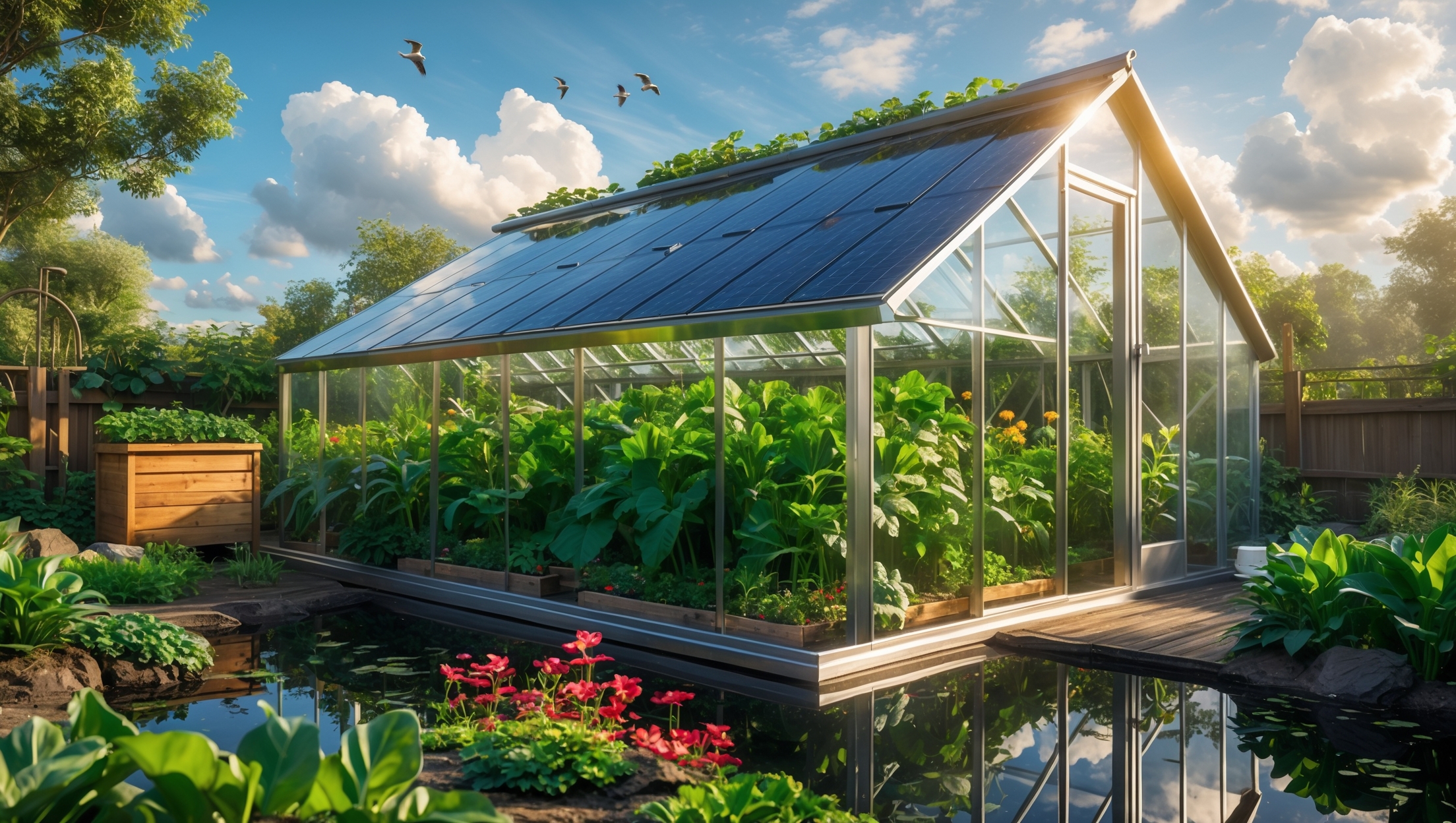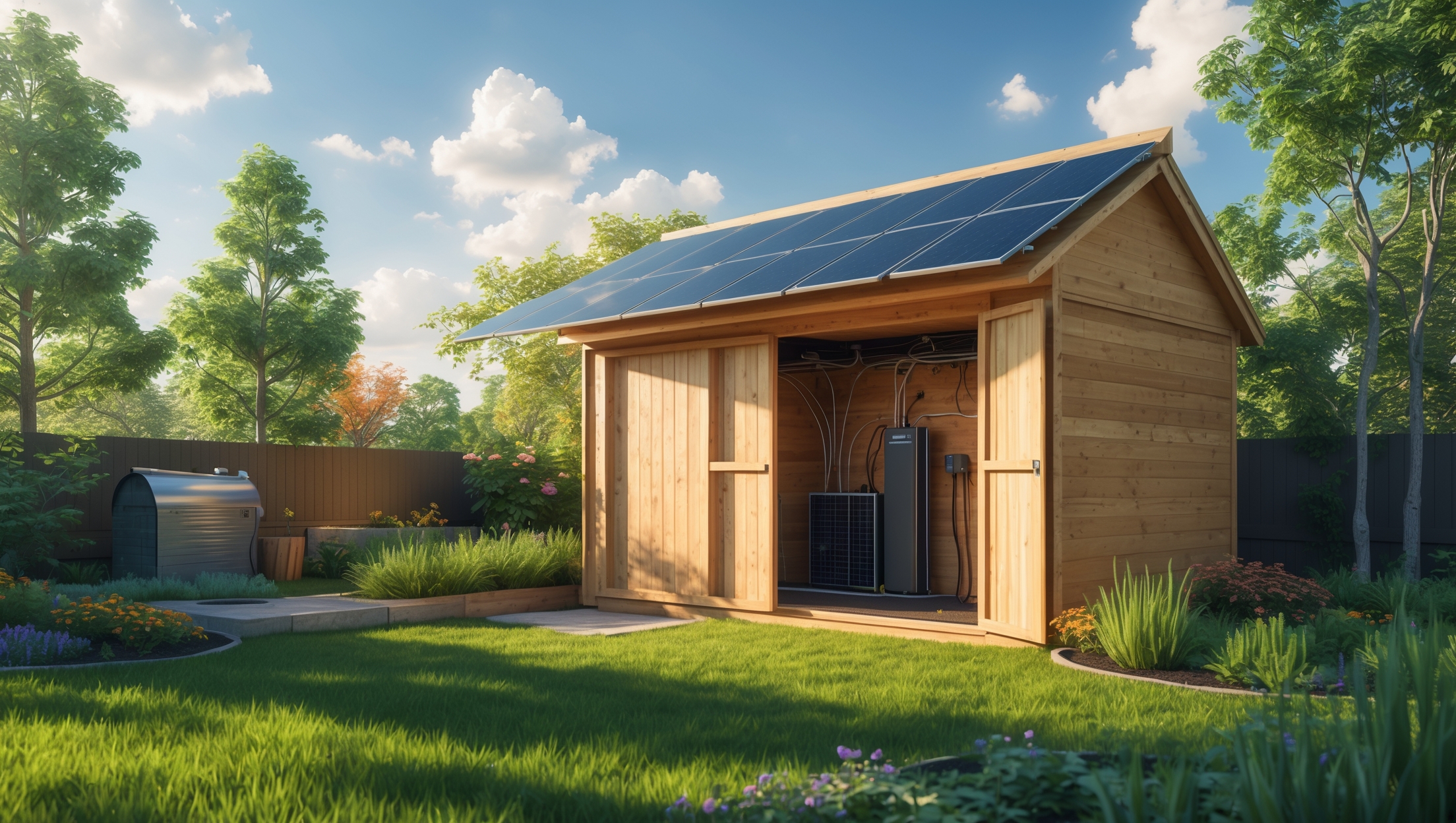Introduction: The Solar Greenhouse Revolution
Solar greenhouses are transforming the way modern homesteads and eco-conscious homeowners approach both food production and energy generation. Unlike conventional greenhouses, a solar greenhouse leverages passive solar design, thermal mass, and often integrated photovoltaics to create a self-sustaining, climate-resilient system. This approach yields year-round, fresh produce while reducing energy bills, boosting property value, and shrinking your carbon footprint. But before you break ground, navigating the maze of local permits, building codes, and utility compliance is essential. Mistakes here can lead to costly delays, fines, or even forced removal. This comprehensive guide demystifies permitting, compliance, and practical steps for a successful solar greenhouse installation—whether you’re in a suburban backyard or a rural plot. We’ll cover everything from site selection, zoning research, plan submission, and inspections to energy interconnection, stormwater management, and future-proofing your design for evolving regulations. Let’s get your sustainable oasis growing—by the rules and for the long term.
Understanding Permitting for Solar Greenhouses
What Makes a Solar Greenhouse Unique for Permits?
Solar greenhouses often combine two regulated structures: an agricultural building and a solar energy system. This dual nature means you’ll likely encounter both building/zoning regulations (for the greenhouse) and utility/interconnection requirements (for solar). Some regions treat greenhouses as accessory structures; others classify them as utility buildings, especially if energy generation is involved. Knowing your local definitions is key to a smooth permitting process.
Key Permitting Factors to Consider
- Zoning and Land Use: Not all zones allow greenhouses, and fewer allow energy generation. Check for setbacks, lot coverage, and allowable uses.
- Building Permits: Required for structures over a certain size or with utilities (plumbing, electric, heating). Solar arrays, especially roof-mounted, may trigger additional review.
- Electrical Permits: If adding solar photovoltaics (PV), battery storage, or grid interconnection, electrical permits are non-negotiable.
- Plumbing Permits: For integrated irrigation, rainwater harvesting, or greywater reuse systems.
- Environmental Compliance: Stormwater management, wetland protection, and local energy ordinances may apply.
Researching Local Requirements
Start with your municipal building department. Ask for guidance on greenhouses with integrated solar. Request zoning maps, development codes, and permit checklists. Some cities have fast-track solar or agricultural structure programs; others require a formal pre-application meeting. Document every conversation and collect sample permit applications. For rural properties, county or township offices may be your point of contact.
Step-by-Step Permitting Process
1. Preliminary Research & Feasibility
- Review property deed restrictions and HOA covenants.
- Use online GIS or zoning maps to confirm your property’s land use designation.
- Identify utility easements, septic fields, or protected buffer zones.
- Check for floodplain, wetland, or wildfire risk overlays that may add requirements.
2. Conceptual Design & Professional Input
- Sketch your intended greenhouse size, orientation, and solar panel placement.
- Consult a local architect or greenhouse builder familiar with passive solar design and local codes.
- Verify structural requirements for snow/wind loads and foundation type.
- Plan for electrical and plumbing runs—these often require separate permits.
3. Zoning and Land Use Application
- Submit a zoning clearance or land use application before the building permit.
- Include site plans showing setbacks, dimensions, and orientation.
- Address any neighbor notification or public hearing requirements, especially in urban/suburban areas.
4. Building Permit Submission
- Prepare detailed construction drawings: foundation, framing, glazing, doors, and roof.
- Show integration of solar PV: mounting details, wiring diagrams, inverter location.
- Include specifications for thermal mass (e.g., water barrels, stone, phase-change materials) if used.
- Attach manufacturer specs for greenhouse kit or solar panels.
- Pay permit fees (often tiered by size or project value).
5. Utility and Electrical Permitting
- If grid-tied, submit an interconnection application to your electric utility—this can take weeks to months for approval.
- Provide line diagrams and equipment cut sheets.
- For off-grid systems, electrical inspection is still usually required for code compliance and insurance.
6. Environmental and Stormwater Compliance
- Submit a stormwater management plan if your greenhouse exceeds local impervious surface thresholds.
- Plan for rainwater harvesting or permeable paving where possible.
- In sensitive areas, provide erosion control and habitat protection measures.
7. Inspections and Final Approval
- Schedule inspections at key stages: foundation, framing, electrical, final.
- Maintain a tidy, safe job site to avoid delays or re-inspection fees.
- Obtain your Certificate of Occupancy or final sign-off before use.
Common Compliance Pitfalls (and How to Avoid Them)
1. Overlooking Solar Panel Setbacks or Glare Restrictions
Some regions require specific setbacks for solar panels, especially near lot lines or roadways. If your greenhouse faces south and panels are angled, check if glare will affect neighbors or traffic—some building departments require an anti-glare certification.
2. Skipping Utility Notification for Grid-Tied Systems
Never connect a solar system to the grid without utility approval. Unauthorized connections can result in disconnection, fines, or voided warranties.
3. Underestimating Electrical Code Complexity
Solar greenhouses often require subpanels, weatherproof disconnects, and dual-metering setups. Use a licensed electrician familiar with both greenhouse and solar installations to avoid costly redos.
4. Ignoring Snow Load and Wind Resistance
Greenhouses with solar panels bear extra weight. Ensure your design meets local snow and wind load standards—especially in northern or coastal areas. Reinforce rafters and use approved fasteners.
5. Failing to Address Water Runoff or Drainage
Greenhouse roofs and solar panels concentrate stormwater. Without proper gutters, rain gardens, or French drains, you risk flooding your garden (or your neighbor’s).
Documentation Checklist
- Site Plan: Scaled drawing showing property boundaries, greenhouse location, solar panel layout, utility connections, and drainage features.
- Construction Drawings: Foundation, framing, glazing, roof details, and solar integration.
- Manufacturer’s Specifications: Greenhouse kit, solar panels, inverters, batteries, and key hardware.
- Electrical Diagrams: System wiring, disconnects, grounding, and interconnection points.
- Permit Applications: Zoning, building, electrical, plumbing, stormwater.
- Insurance Certificates: If required for larger or grid-tied installations.
- Neighbor Notification Forms: If applicable for zoning hearings.
Tips for Smoother Compliance and Faster Approval
- Engage Early: Contact permitting officials in the design phase. Their input can save weeks later.
- Bundle Applications: Submit all relevant permits together to avoid conflicting requirements.
- Be Transparent: Clearly describe the dual purpose (food and energy) of your project. Share educational materials if officials are unfamiliar with solar greenhouses.
- Consider Professional Plans: Engineered drawings and stamped calculations demonstrate compliance and are often required for larger or non-standard designs.
- Plan for Inspections: Keep records of every change or inspection. Take photos of foundation, framing, and wiring before they’re covered.
Future-Proofing: Adapting to Evolving Codes and Incentives
Sustainable technology is evolving—and so are local codes. Many jurisdictions are updating requirements for energy storage, electrification, and even climate resilience. Here’s how to stay ahead:
- Design for Expansion: Build a greenhouse frame that can support additional panels, batteries, or water tanks in the future.
- Track Incentives: Federal and state rebates for solar and energy efficiency often require specific installation standards. Register your project and keep documents for future audits.
- Monitor Building Code Updates: Subscribe to local building department newsletters or listservs. Changes to electrical codes or fire setbacks may affect future upgrades.
- Document Everything: Create a digital file of permits, plans, inspections, and warranties. This speeds up future home sales or insurance claims.
Frequently Asked Questions (FAQ)
Do I need a permit for a small, backyard solar greenhouse?
Most areas require a permit for any structure over 100–200 sq ft, or if you’re adding electric/plumbing. Always check with your local building department—even if kits advertise “no permit needed.”
Can I build a solar greenhouse in a historic district or HOA?
Historic districts and HOAs often have stricter rules on appearance, height, and solar panel placement. You may need design review or neighbor approval. Provide renderings and emphasize eco-benefits.
What if my property is off-grid?
You’ll still need building and electrical permits for safety and insurance—even if not connecting to the grid. Off-grid systems are often scrutinized for fire safety and structural resilience.
Do I need a licensed contractor?
For electrical and plumbing, most jurisdictions require licensed trades. Owner-builders are sometimes allowed for simple, non-commercial structures—check your state’s rules.
Conclusion: Building with Confidence for a Sustainable Future
Installing a solar greenhouse is one of the most rewarding steps you can take toward a resilient, sustainable lifestyle. Beyond fresh, year-round produce and renewable energy, it’s an investment in your property’s value, utility savings, and climate preparedness. But the journey starts with smart compliance. By understanding local permitting processes, preparing thorough documentation, and engaging proactively with officials, you transform a potential headache into a streamlined, successful project.
Clear communication and meticulous planning not only protect you from costly mistakes—they also set a standard for your community, demonstrating that sustainable building can be both innovative and responsible. As codes and incentives evolve, your well-documented, code-compliant solar greenhouse positions you to adapt and expand, whether you envision adding battery storage, smart controls, or even community education programs.
Remember: every permit, inspection, and compliance step is part of a larger movement toward greener, more resilient homes. Take pride in your process, share your knowledge, and inspire others to grow their own food-energy ecosystems—rooted in both nature and good governance. Your solar greenhouse doesn’t just nourish your family; it leads the way to a brighter, more sustainable energy future for all.




